Browse these factsheets from our mentor network
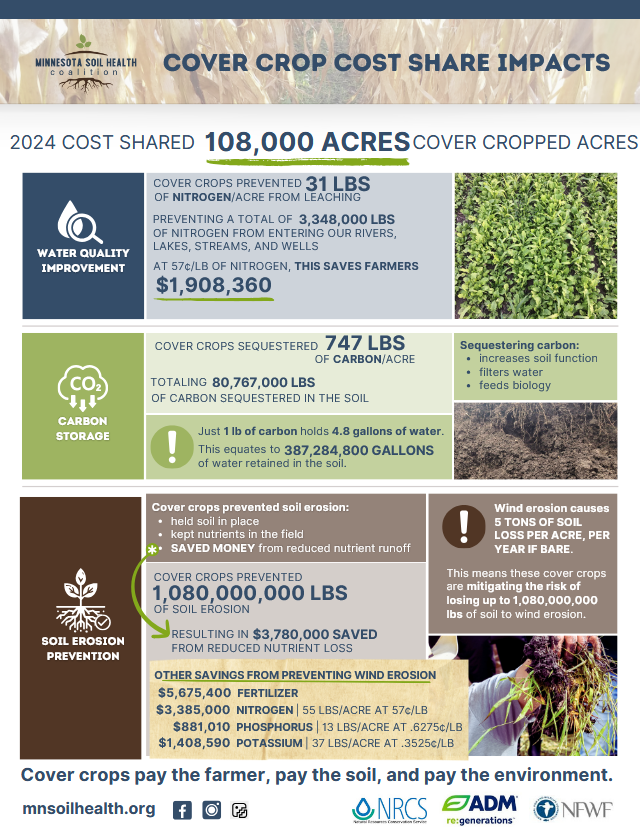
2024 Cover Crop Cost Share Impacts
In 2024, over 108,000 acres of Minnesota farmland were cover cropped through cost share programs – protecting soil, improving water quality, and capturing carbon across the state.
- Water Quality Improvement: Cover crops prevented 31 lbs of nitrogen per acre from leaching, saving farmers and estimated $1.9 million while keeping nutrients out of rivers and lakes.
- Carbon storage: An estimated 80 million pounds of carbon were sequestered – improving soil health, water retention, and biological activity.
- Soil erosion Prevention: Cover crops held back over 1 billion pounds of soil erosion, saving an additional $3.7 million from reduced nutrient losses and erosion.
- Cover crops pay the farmer, pay the soil, and pay the environment.
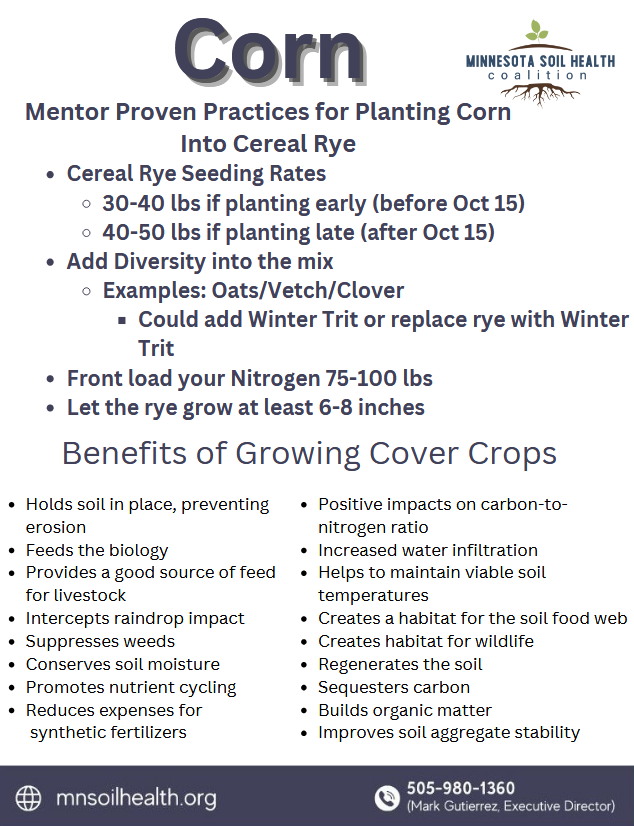
Corn Factsheet
This fact sheet highlights trusted farmer methods for successfully planting corn into cereal rye – from seeding rates and nitrogen strategies to mixing diverse cover crops. It also outlines the many benefits of cover crops, including improved soil structure, moisture retention, weed suppression, and biological activity.
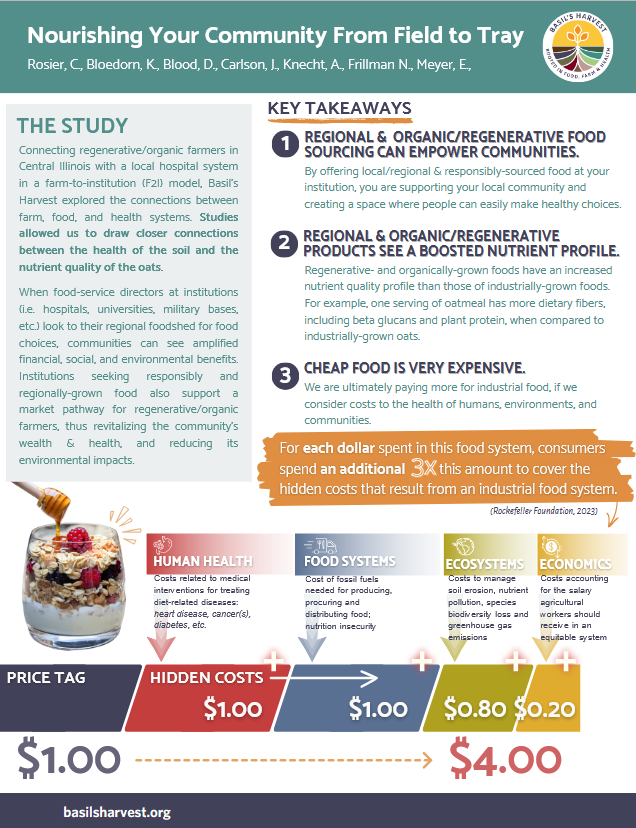
Hidden Costs of Food
When food-service directors at institutions (i.e. hospitals, universities, military bases, etc.) look to their regional foodshed for food choices, communities can see amplified financial, social, and environmental benefits. Institutions seeking responsibly and regionally-grown food also support a market pathway for regenerative/organic farmers, thus revitalizing the community's wealth & health, and reducing its environmental impacts. This factsheet, created in partnership with Basil's Harvest, explores hidden costs in the food system that must be considered as institutions aim to nourish their communities, from field to tray.
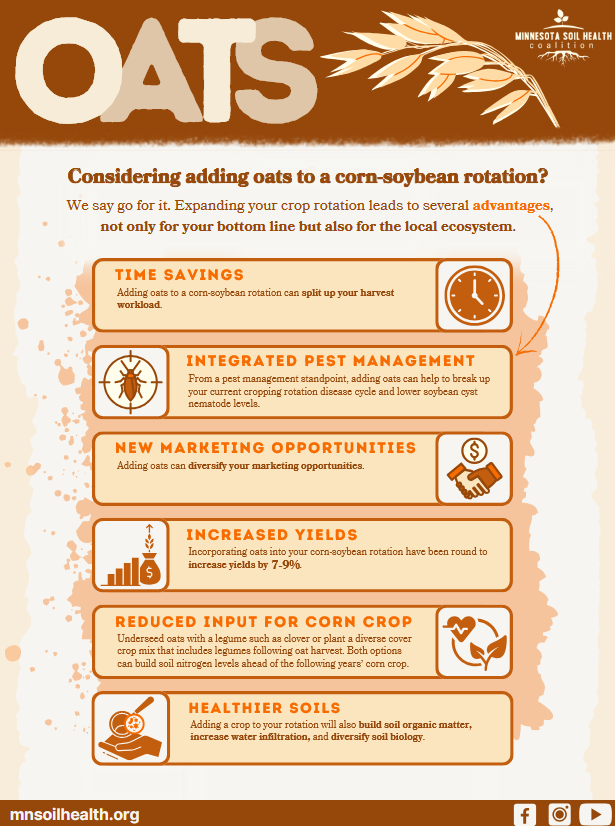
Oats Factsheet
Thinking about adding oats to your rotation? This fact sheet breaks down why it’s worth it – from time savings, pest management, and increased yields to improved soil health and reduced inputs for next year’s corn. It also includes key tips for successful establishment – like ideal field selection, herbicide restrictions, planting rates, weed control, and harvest timing – all tailored for Minnesota farmers.
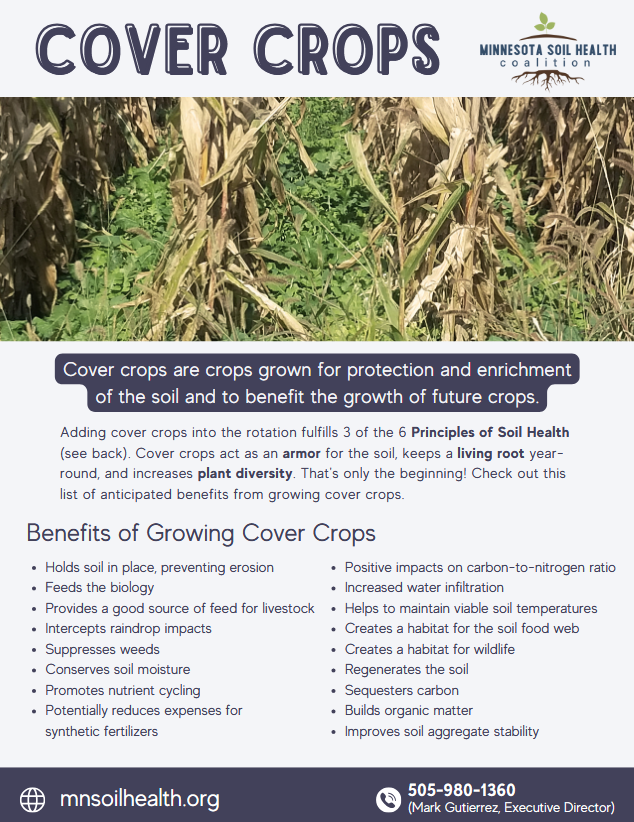
Cover Crops Factsheet
Cover crops are crops grown for protection and enrichment of the soil and to benefit the growth of future crops. Adding cover crops into the rotation fulfills 3 of the 6 Principles of Soil Health: cover crops act as an armor for the soil, keeps a living root year-round, and increases plant diversity. But that's only the beginning! Check out this flyer to explore the anticipated benefits from growing cover crops.
